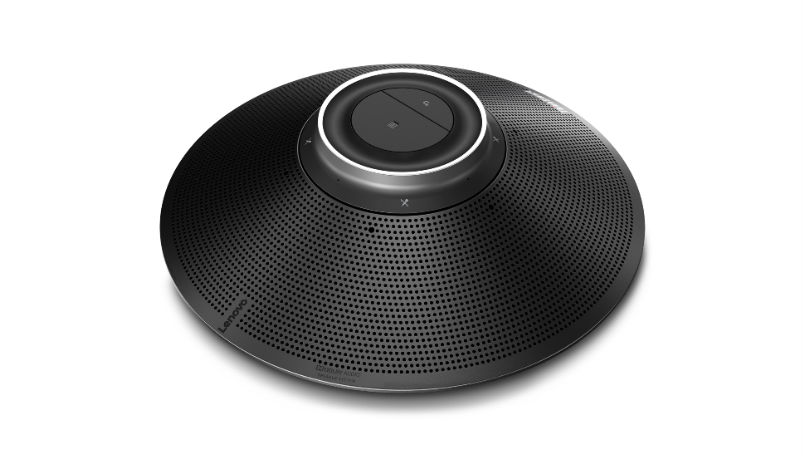Equipping a conference room used to be really easy. You’d specify a speaker phone for the room, maybe select a couple of white boards and a flip chart, specify a conference table and chairs and that’d be about it. Video conferencing attempted to disrupt this several times, but a lack of compatibility, poor ease of use, and extreme expense tended to keep it from getting to true critical mass. The bigger problem was the systems tended to be underutilized once in. Same with digital white boards there was a bit of excitement around them, but folks didn’t seem to want to learn how to use them, so they too never really got to critical mass.
The choice seemed top be, keep it simple and get complaints about not having tools that were really expensive, make a guess about the advanced technology and then try to defend the expense against little subsequent usage, or pass the task of equipping the conference rooms to someone you really don’t like. Generally, the last choice tended to be the best for you, but it hardly put you in the running for best co-worker of the year.
What makes the Lenovo ThinkSmart Hub 700 interesting is that it addresses most of the pain points I know of in conference room technology without adding a ton of complexity. It seems to follow the KISS rule of “Keep It Simple Stupid” which is something we all should have had engraved on our foreheads years ago.
Let’s talk about conference room solutions this week.
Conference Room Pain Points
I spent a very short period of time as a space planner—one of the folks who has to lay out and specify an office floor, and I didn’t enjoy it. Changing technology, wiring nightmares, and no clear idea what folks actually wanted to use now, let alone how that would change in the next 5 years, made that job a near no-win nightmare.
What I learned was that if you kept to the basics at first you had little risk of someone showing up and pointing out you’d selected the wrong platform. You want to make sure it is compatible with whatever you currently license as a collaboration platform, and make sure you check that isn’t going to change soon, then choose the simplest solution you can that embraces it.
You will likely need a projector or a monitor for the room, so you need an easy way to connect to it (wireless is preferred, but HDMI is the current standard for connectivity if you are going hard wired). Ideally you might want to use this opportunity to put in place some kind of conference room scheduling capability and it would be nice to get metrics on conference room use so you can decide if you need more or less of the damn things.
Lenovo ThinkSmart Hub 700
The ThinkSmart Hub 700 looks somewhat like the Polycom speakerphone it will likely replace but without a keypad (it won’t plug into your existing phone system). It is designed to work with online conferencing services and embraces two of the most popular, Skype and Zoom. It has a management console that will allow you to schedule and monitor any of the conference rooms that have this device in them. It has occupancy sensors which, with Bluetooth pairing, allow employees a fast and easy path to connect to the device with their laptops or tablets and it also has hard wired HDMI capability. You can use it for simple shared screen experiences or add a camera and get video conferencing capability.
But, the main point is that the device is simple. It provides all the basic room functions (small conference/huddle room) and while price isn’t announced, it should be relatively low for a device in this class allowing you to equip more rooms. Part of the problem with the older, more expensive, systems was that your company could only afford a small number, which massively reduced use. You can deploy more of these. Lenovo also offers the Skype-focused ThinkSmart Hub 500 which is less feature rich and more targeted at a Microsoft experience.
Wrapping Up
The ThinkSmart Hub 700 currently showcases the state of the art in simple conference room collaboration solutions. It can just be a speakerphone connected to services like Skype or it can easily be upgraded to a full video conferencing system. Designed for a small conference or Huddle room the Lenovo ThinkSmart Hub 700 appears to address most of the pain points in terms of it being easy to set up and use, easy to upgrade to video conferencing or add or change out displays and comes with a much-needed conference room scheduling application. If it is priced right—no price has yet been announced—this could be just the thing to standardize on, for now.
- Intel’s Identity Crisis: In Search of a CEO Who Can Make the Elephant Dance - August 15, 2025
- Lenovo’s AI Edge: How ‘Eating your Own Dog Food’ Creates a Competitive Advantage - August 8, 2025
- Threadripper PRO 9000: The Professional’s Unfair Advantage - August 7, 2025




With the evolution of technology, it is essential for conference and meeting rooms to have flexibility and configurability to have different set ups. Theatre style set up of a meeting room is a more popular set up when participants act as an audience.